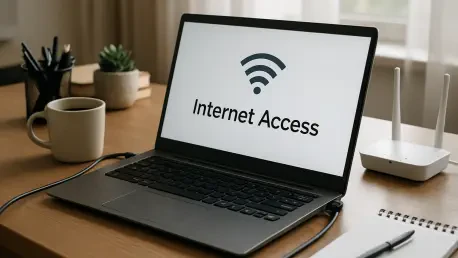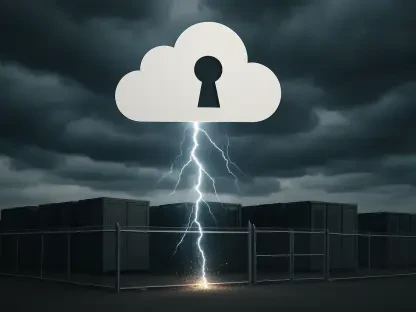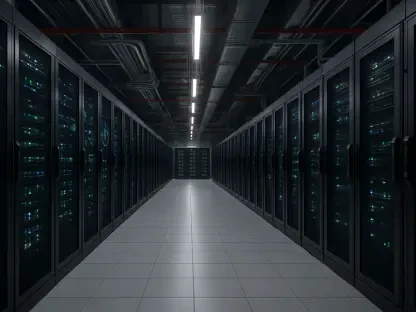In the far-flung corners of the world, from the sun-drenched islands of Guadeloupe in the Caribbean to the remote shores of French Polynesia in the Pacific, a profound digital divide separates remote French territories from the technological advancements of mainland France. While fiber-optic networks and 5G connectivity have become the norm in metropolitan areas, these distant regions often struggle with basic internet access, creating a gap that affects every facet of life. This disparity is not merely a matter of convenience but a critical barrier to accessing education, healthcare, and economic opportunities. Reliable internet, once seen as a luxury, has evolved into a fundamental necessity for these communities. The potential for transformation through enhanced connectivity is immense, promising to bridge gaps in equity and empower residents with tools for a brighter future. Exploring the challenges, current efforts, and future possibilities reveals how digital inclusion could redefine life in these often-overlooked areas.
Overcoming the Barrier of Isolation
Spanning vast distances across oceans, remote French territories like French Guiana and Wallis and Futuna face extraordinary challenges due to their geographical isolation, making the deployment of internet infrastructure a daunting task. Thousands of miles from mainland France, the logistics of installing undersea cables or establishing reliable satellite systems become incredibly complex and expensive. The diverse landscapes, from rugged mountains to scattered island communities, further complicate efforts to build and maintain connectivity networks. Natural disasters, such as hurricanes and cyclones, frequently strike these regions, disrupting fragile infrastructure and leaving residents cut off from the digital world for extended periods. This isolation is not just a physical barrier but a profound obstacle to social and economic integration, highlighting the urgent need for innovative solutions tailored to these unique environments.
Beyond the physical challenges, the impact of isolation on connectivity extends to the very fabric of daily life in these territories, where even basic communication can become a struggle during outages. The remoteness means that repair teams often take days or weeks to reach affected areas, prolonging disruptions and exacerbating the digital divide. For communities already grappling with limited resources, the inability to maintain consistent access to online platforms stifles progress in critical areas like education and emergency response. The high cost of transporting equipment and expertise to these distant locations also drives up service fees, placing an additional burden on residents who can ill afford it. Addressing this isolation requires not only technological innovation but also a deep understanding of the environmental and logistical realities that shape life in these regions, ensuring that solutions are both practical and sustainable over the long term.
Addressing Uneven Access and Quality
While some progress has been made in enhancing connectivity, the quality and affordability of internet services in remote French territories remain starkly uneven compared to mainland standards. Territories such as Réunion and New Caledonia have benefited from upgrades like fiber-optic networks and expanded 4G coverage, offering a glimpse of modern digital infrastructure. However, many households in less developed areas still rely on outdated ADSL connections or costly satellite services that deliver frustratingly slow speeds. This disparity in access creates a two-tiered system where urban centers advance while rural and less populated regions lag behind. The high cost of subscriptions, often disproportionate to the service quality, further excludes lower-income families, deepening the digital divide and limiting their ability to participate in an increasingly online world.
Compounding the issue of quality is the persistent challenge of reliability, as even those with access often face frequent interruptions that hinder productivity and connectivity. In many of these territories, internet speeds fall well below what is needed for modern applications like video conferencing or streaming educational content, rendering digital tools ineffective. For small businesses trying to compete in a global market or students attempting to keep pace with online curricula, these limitations are more than an inconvenience—they are a significant roadblock to success. The financial strain of expensive, subpar services also means that many residents must prioritize basic needs over internet access, perpetuating cycles of exclusion. Bridging this gap in quality and affordability is essential to ensure that all communities, regardless of location or economic status, can reap the benefits of digital inclusion.
Transforming Lives Through Connectivity
The lack of reliable internet access casts a long shadow over daily life in remote French territories, profoundly affecting essential sectors like education, healthcare, and economic development. Students in regions such as Mayotte often find themselves at a severe disadvantage, unable to participate fully in online learning, especially during global crises when remote education becomes a necessity. Without stable connectivity, access to digital resources and virtual classrooms remains out of reach, widening the educational gap between these territories and mainland France. This digital exclusion not only hampers individual growth but also limits the potential for future generations to compete in a technology-driven world, underscoring the urgent need for equitable access to online tools and platforms.
In healthcare, the consequences of poor internet are equally dire, as unreliable networks obstruct the delivery of telemedicine services critical for isolated communities in these territories. Residents often face delays in receiving medical consultations or sharing vital health data with specialists located far away, which can have life-altering implications in emergencies. Similarly, the economic landscape suffers as small businesses and tourism operators—key pillars of local economies—struggle to establish an online presence or engage with global markets. Without the ability to market products or services digitally, these enterprises miss out on growth opportunities, stunting regional development. Enhanced connectivity could serve as a catalyst, unlocking access to remote healthcare solutions and empowering entrepreneurs to thrive in a competitive digital economy.
Collaborative Efforts for Digital Inclusion
Significant strides are being made to close the connectivity gap in remote French territories through coordinated efforts between government bodies and private telecom companies. Initiatives like “France Très Haut Débit” aim to bring universal broadband access by channeling public funding into infrastructure projects and fostering partnerships with industry players. Strategies include the expansion of undersea cables to connect distant islands, the testing of 5G networks in select areas, and the enhancement of satellite services for the most isolated communities. Additionally, subsidies for essential institutions like schools and hospitals prioritize connectivity where it is most needed. While these efforts mark a promising start, the pace of progress often varies, with urban areas typically benefiting first while rural regions continue to wait for improvements.
Despite the ambitious scope of these initiatives, implementation challenges persist, requiring a nuanced approach to ensure that no community is left behind in the push for digital inclusion. The high cost of infrastructure development in remote locations often slows down projects, as does the need to navigate complex environmental regulations and local conditions. Partnerships with private sector entities help share the financial burden, but differing priorities between stakeholders can lead to delays or uneven rollout of services. Tailoring solutions to the specific needs of each territory—whether through targeted subsidies or innovative technologies—is crucial for maximizing impact. By fostering collaboration and maintaining a focus on equitable distribution, these efforts can build a foundation for lasting change, ensuring that even the most isolated regions gain access to the digital tools necessary for modern life.
Tackling Lingering Obstacles
Even with ongoing initiatives, formidable barriers continue to impede universal internet access in remote French territories, demanding targeted strategies to address deep-rooted issues. High subscription costs remain a significant hurdle, often placing reliable connectivity beyond the reach of many households already stretched thin by economic constraints. Digital literacy also poses a challenge, as a lack of familiarity with technology limits the ability of residents to fully utilize available services, even when access is provided. This gap in skills underscores the need for educational programs alongside infrastructure development to empower communities to engage with digital tools effectively. Without addressing these socioeconomic factors, the benefits of connectivity risk remaining unevenly distributed across populations.
Technical challenges further complicate the path to digital equity, as weather-dependent satellite systems frequently falter under the harsh conditions common in these territories, disrupting service at critical moments. The expense of maintaining and repairing infrastructure in such remote locations adds another layer of difficulty, often resulting in prolonged outages that frustrate residents and hinder progress. Overcoming these obstacles requires a multifaceted approach that combines affordability measures, community training, and resilient technologies designed to withstand environmental challenges. By prioritizing solutions that account for both the financial and technical realities of these regions, stakeholders can work toward a future where connectivity is not just available but accessible and reliable for all, regardless of circumstance.
Envisioning a Connected Tomorrow
The transformative potential of reliable internet access in remote French territories is boundless, offering a pathway to equity and opportunity if current barriers can be surmounted. Emerging technologies, such as low-orbit satellites, promise to deliver faster and more consistent connectivity to even the most isolated areas, bypassing some of the logistical challenges of traditional infrastructure. Deeper rollouts of fiber-optic networks also hold the key to bridging the gap between urban and rural communities, ensuring that high-speed access becomes a reality across diverse landscapes. If paired with sustained investment, these advancements could revolutionize how residents engage with the world, leveling the playing field in ways previously unimaginable and fostering a sense of inclusion in the global digital community.
Looking ahead, the ripple effects of enhanced connectivity could redefine key sectors, empowering students with equal access to educational resources and enabling healthcare providers to offer seamless remote consultations. Local entrepreneurs and tourism operators stand to gain immensely, tapping into international markets through robust online platforms and driving economic resilience in regions long reliant on limited industries. Collaboration between public and private sectors remains essential to maintain momentum, ensuring that investments align with the real needs of communities. By focusing on sustainable, tailored solutions, the vision of a connected future for these territories moves closer to reality, promising not just technological progress but a profound improvement in quality of life for all residents.









